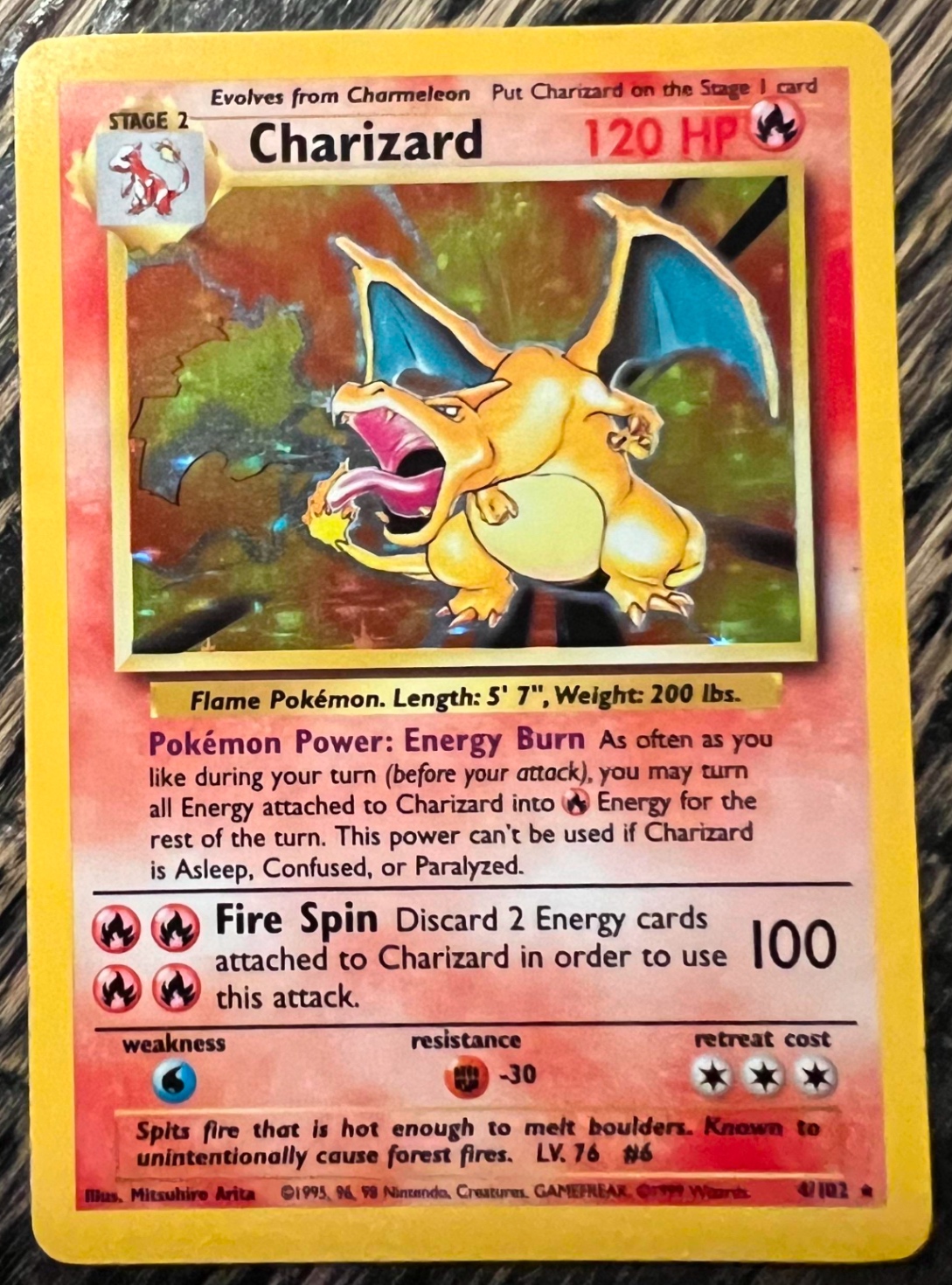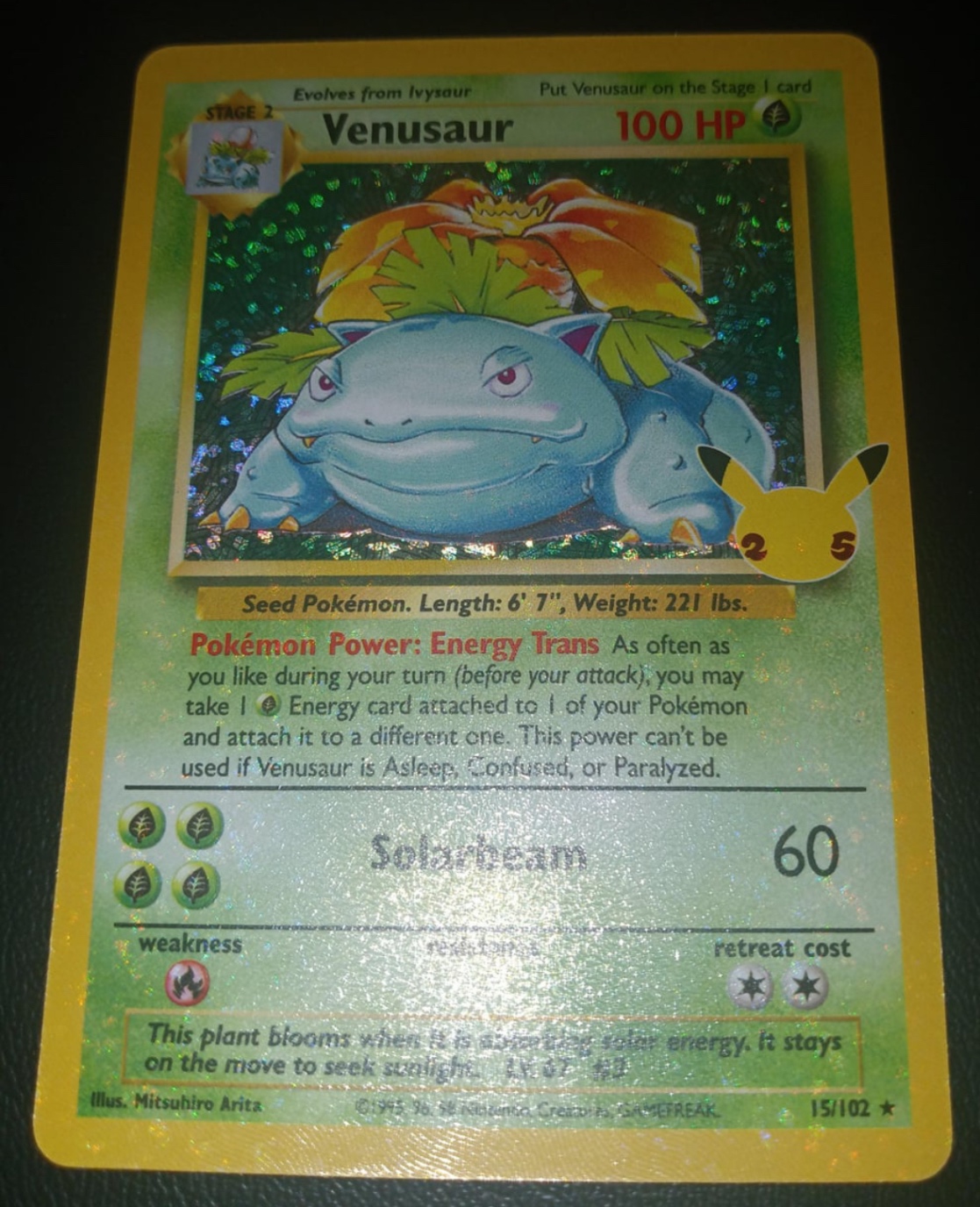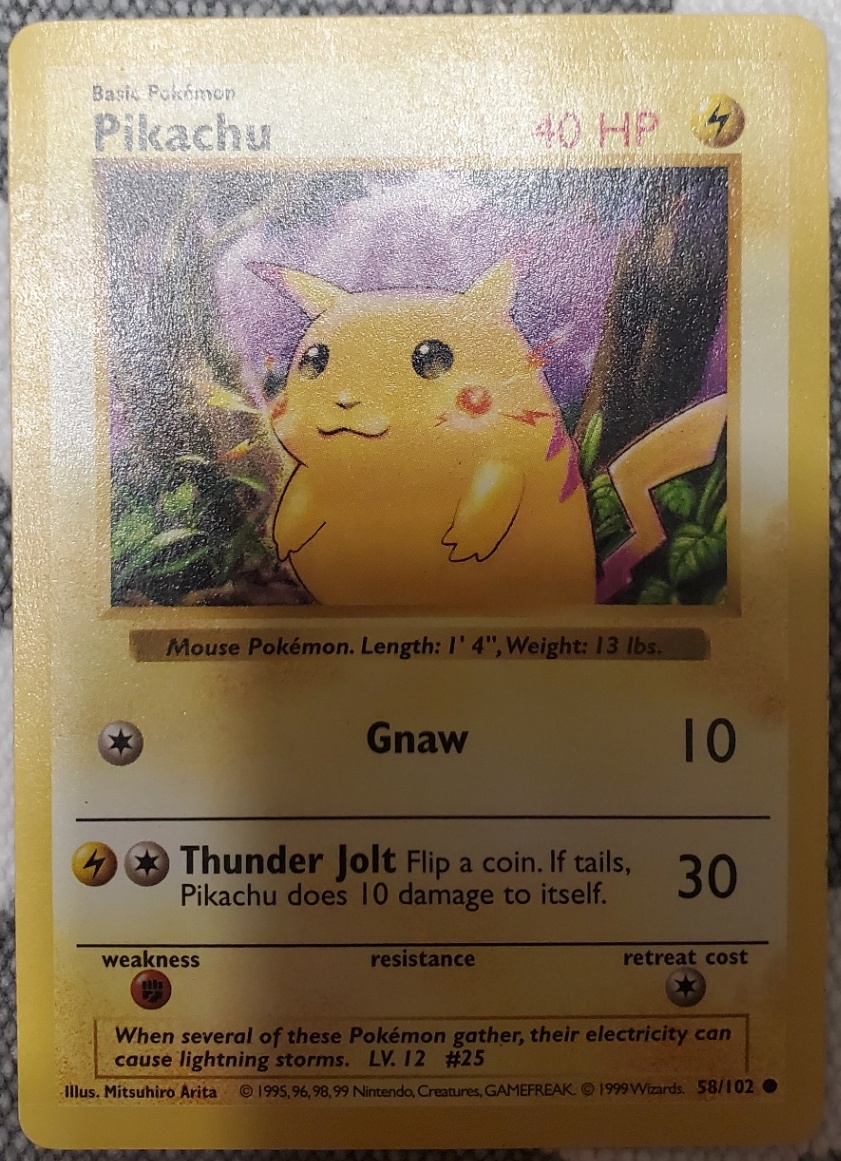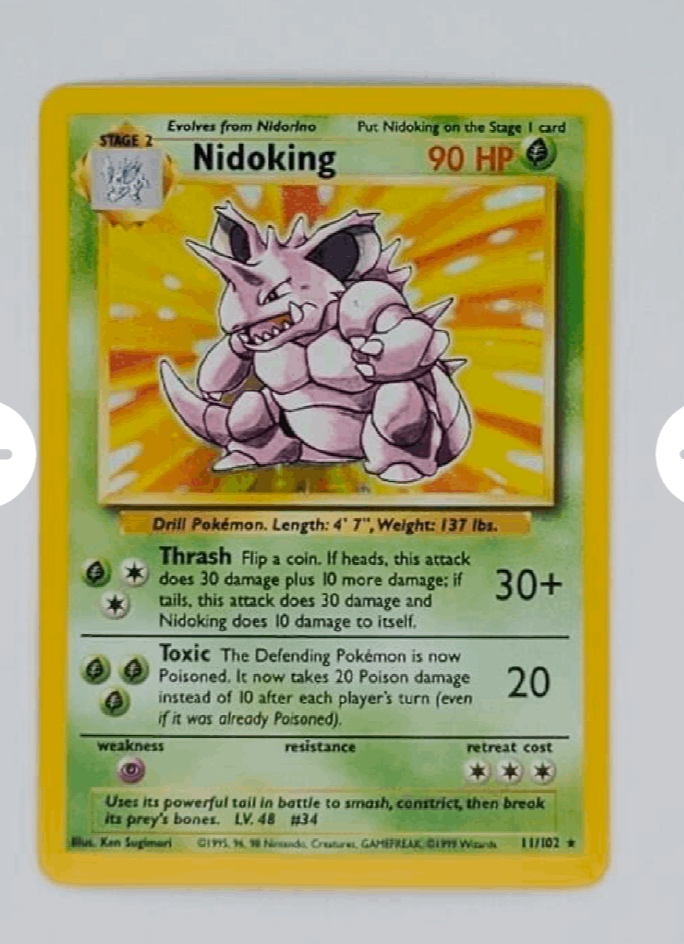A Collector's Guide to the Base Set
The 1999 Pokémon Base Set: A Time Machine in 102 Cards
If you ever angled a holo under the kitchen light just to make the cosmos pattern dance, this one’s for you. The original Base Set wasn’t just cardboard; it was bike rides to the mall, binders that creaked when the rings snapped shut, and the soft crinkle of top-loaders tucked into a shoebox under your bed. Today, those same cards are our portal back to after-school trades on the blacktop—and, for many, a surprisingly robust collecting and investment lane.


The Big Three Still Light Up the Room
No nostalgia trip is complete without the Big Three: Charizard, Blastoise, and Venusaur. The roar, the surge, the bloom—their holos felt like treasure as kids and still command attention in 2025. After filtering recent eBay results to focus on true English Unlimited holo variants (excluding 1st Edition, Shadowless, foreign-language, and heavily damaged listings), we see realistic, repeatable sale ranges—not outlier hype.
- Charizard 4/102 (Unlimited, PSA 7): recent sales cluster around $438–$479; BGS 7.5 around $315–$425.
- Blastoise 2/102 (Unlimited, PSA 8): about $219–$225; raw LP–NM tends to land ~$60–$110 depending on wear.
- Venusaur 15/102 (Unlimited, PSA 7): commonly $115–$150; raw NM-leaning copies often change hands ~$60–$110.
Always separate 1st Edition and Shadowless—those are different markets entirely. For example, 1st Edition Blastoise PSA 7 recently hammered in the $1,575–$1,700 range, while a PSA 10 Unlimited Alakazam landed in the ~$755–$760 pocket.
Curious about your own cards from this set? Scan them with our AI grader to get instant centering, surface, and value snapshots—then relive that binder-page magic with confidence.
Nostalgia Meets Nuance: Real Case Studies from the Base Set
A tiny yellow icon of our childhood
First up, 1999 Pikachu Shadowless Red Cheeks 58/102 Common. This is a nostalgia heat-seeker: Shadowless layout, the charming “red cheeks” print, and that unmistakable Ken Sugimori look. After filtering to true Shadowless Red Cheeks copies, we saw a raw sale at ~$32 and a PSA 8 example at ~$38.89. That tight raw-to-graded spread is classic for commons: demand is huge, but the supply of mid-grade copies is too. Still, for many collectors, this one is the gateway back into the hobby—and one of the most evocative binder-centerpiece commons ever printed.

Alakazam’s brainy brilliance
The listing world sometimes calls Base Set holos “reverse,” but reverse holos didn’t exist in 1999. So when we analyze 1999 Alakazam Reverse Holo 1/102 Rare, we filter for true Base Set Holo Rare variants and split results by Unlimited, Shadowless, and 1st Edition. Once filtered:
- Unlimited raw sales frequently land ~$13–$30 depending on wear and print quality.
- Unlimited PSA 10: a pair of recent sales around $755–$760 shows a strong top-end.
- Shadowless PSA 8 hovered about ~$201.50 in a recent comp.
- 1st Edition examples command an order-of-magnitude premium (e.g., BGS 9 around ~$1,550).
If your copy sparkles under light but shows holo scuffing or edge whitening, it can still photograph beautifully and find a buyer—just price to condition. Not sure how your copy stacks up? Use Fast Scan to benchmark it instantly at a show or on your couch.
The Starters that started it all
The starter evolutions are the heartbeat of Base Set.
- 1999 Charizard Holo Rare 4/102 Rare: The holo that launched a thousand trades. Filtered PSA 7 Unlimited sales: ~$438–$479 with BGS 7.5 around ~$315–$425. Raw prices swing wildly with condition; be skeptical of “too good to be true” listings or foreign-language cards if you’re after English Unlimited.
- 1999 Blastoise Reverse Holo 2/102 Rare: Again, true Base Set = Holo Rare. Filtered Unlimited PSA 8 comps hover ~$219–$225; raw LP-to-NM examples regularly land in the ~$60–$110 lane. 1st Edition PSA 7? A different league at ~$1,575–$1,700.
- 1999 Venusaur Holo Rare 15/102 Rare: Filtered Unlimited PSA 7 sales come in consistently around $115–$150, with NM-leaning raw copies often crossing $60–$110. Be careful to strip out Shadowless and 1st Ed when comping—those outliers can skew averages fast.
The purple powerhouse
Don’t sleep on 1999 Nidoking Reverse Holo 11/102 Rare (again, true holo—not reverse). Filtered Unlimited raw sales show a steady $14–$20 cadence for LP/NM copies, while a PSA 8 Unlimited comp landed around ~$55. Shadowless/1st Edition variants materially change the calculus, so sort your search results carefully to avoid apples-to-oranges comparisons.

Spotting the Variants (and the Traps)
- No reverse holos in 1999 Base Set. If a listing says “reverse,” it’s either mislabeled or not Base Set. Filter those out.
- Unlimited vs. Shadowless vs. 1st Edition: Shadowless lacks the drop shadow on the art box and uses earlier color/ink tells; 1st Edition carries the stamp. Each tier has its own pricing universe.
- Language matters: German Glurak and Spanish Charizard are awesome—just price them as such. If you’re comping English Unlimited, exclude foreign-language results.
- Condition drives value: Whitening, holo scratches, and edge dings will swing price more than a neat description ever can. Clear lighting and honest photos win.
Ready to see where your childhood pulls land today? Sign up for CardGrader.AI to get free credits and start evaluating your Base Set stack in minutes.
Holo vs. Non-Holo in Base Set
Within Base Set, many rares were printed as holos; there are also non-holo rares, but you won’t find modern-style “reverse holos.” Value deltas between holo and non-holo can be dramatic. For example, Alakazam, Blastoise, Venusaur, and Charizard are all holo rares—non-holo versions of these specific cards don’t exist in Base Set. When in doubt, match your card’s number, set symbol (or lack thereof, in Base), language, and whether the foil is in the art window (true holo) or the background (reverse—again, not in Base Set).
Grading Tips from the Binder Era
- Centering: Many Base Set cards are slightly off-center. AI measurement helps—try a quick AI scan to quantify it.
- Edges and Corners: Binder ring nicks and back-edge whitening are common; examine backs as critically as fronts.
- Surface: Look for holo scuffs and print lines. A soft microfiber under indirect light is your friend.
Whether you’re revisiting old binders or building a graded set, the Base Set experience is equal parts memory and method. Use CardGrader.AI to anchor the method—fast comps, AI-driven condition reads, and pricing that filters away the noise—so the memories can do their thing.
Heading to a show? Use CardGrader.AI’s Fast Scan to quickly check values before you trade your childhood away for a couple of scuffed holos—unless it’s for that perfect Charizard, in which case, we get it.